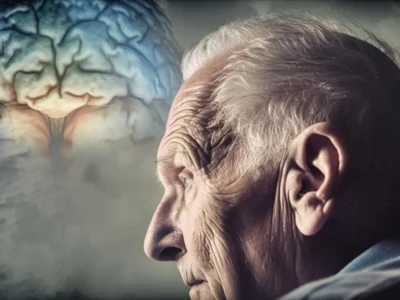Neuropsychologist Edson Elías presents in this article emotional regulation from the perspective of neuropsychology.
The importance of emotional regulation
The work of the neuropsychologist, by its nature, is imbued with affectivity. Although the main goal of interventions is to improve patients’ cognitive functioning, their emotions are present at all times. The following lines will serve to introduce the fundamental concepts for the study of emotion regulation in cognitive psychology and neuroscience.
The study of emotions in neuropsychology
Until recently emotions were considered subjective individual experiences, so their experimental study seemed impossible. Moreover, the Cartesian philosophical tradition had relegated emotions to the realm of passions, assuming they were detrimental to reason. This thought persisted until the publication of “El error de Descastes” (1994). In it, A. Damasio revisits the famous case of Phineas Gage, concluding that there is no reason without emotion. This fact promoted an affective revolution in cognitive psychology which until then had been interested only in the study of “cold” cognitive processes.
In recent decades, affective neuroscience has made important discoveries about the cognition-emotion interface. These findings have revealed that emotions are involved in the modulation of cognitive processes such as attention (e.g., directing or amplifying attention toward stimuli evaluated as pleasant by the individual), memory (e.g., facilitating the consolidation of information with emotional valence and thereby participating in the learning process) and decision-making (e.g., facilitating decisions based on positive or negative emotions previously experienced in analogous situations). The latter is often assessed with the “risk-benefit” paradigm of the Iowa Gamblig Task or “betting game” which has given rise to some adaptations for incorporation into neuropsychological assessment batteries in Spanish, such as BANFE-2 (2014).
Given the importance of emotions in the modulation of cognitive processes, it is important to provide a definition that accounts for their multi-component character.
What are emotions?
Generally, when emotions are defined, only some of their elements are stated, such as changes in the organism, facial expression or the subjective feeling. Klaus Scherer defines them as “a set of episodic changes that occur in different components of the organism, in response to an event evaluated as pertinent by the organism” (p. 10).
Multi-component view of emotion
The multi-component view of emotion allows the following aspects to be highlighted:
First, emotions are temporary as they usually have a relatively short duration, unlike feelings, which last longer over time.
Second, An emotional episode causes physiological changes (e.g., an increase in heart rate), in motor expression (e.g., the facial expression that accompanies the emotion), in action tendency (e.g., the desire to flee or fight), in cognitive appraisal (e.g., evaluating the stimulus as potentially dangerous) and in the subjective feeling (e.g., experiencing fear).
Third, emotion is primarily intended to deal with urgent situations. For this reason, it prepares the body for action, directs attention toward what must be apprehended and remembered, and guides people’s decisions and actions (Ebner and Fischer, 2014).
Fourth, the onset of an emotional episode is marked by the cognitive appraisal (appraisal) of the stimulus perceived by the organism. This can be external (e.g., a rabid dog in the middle of the sidewalk) or internal (e.g., the memory of having been attacked by a dog in the past), varying the response from person to person. Indeed, some individuals will judge the memory of the incident as extremely aversive and unpleasant, while others might judge it as a less challenging or “overcome” event.
When combined with perception and thought, emotion implies for the individual a perceptual, somatosensory and motor re-experiencing of the circumstances in which a knowledge was acquired (“embodied theories of emotion”, see Niedenthal, 2007), and whose intensity and valence can be regulated by the subject.
What does emotion regulation involve?
Because of their social experiences, humans deploy strategies that allow them to regulate their emotions. For example, when an individual is sad and nevertheless must enliven an activity, or when they are happy because they have just been promoted but must disguise their joy so as not to offend a colleague who did not receive the promotion.
For Gross (1998), emotion regulation is a process through which individuals have the possibility to influence the nature of their emotions, the timing and the way in which they experience them. This definition accounts for the nature of the influence exerted with the aim of maintaining, increasing or attenuating the intensity of the emotion, as well as modifying its hedonic valence (pleasant, unpleasant).
The four types of emotion regulation most studied are attenuation of unpleasant emotions, maintenance or increase of pleasant emotions, increase of unpleasant emotions and attenuation or suppression of pleasant emotions (Mikolajczak & Desseilles, 2012).
These processes are an adaptive response in the service of personal goals, the satisfaction of affective needs, the maintenance of balance and well-being, which promotes mental health. They can be automatic (unconscious) or controlled (conscious), intrinsic or extrinsic and can be aimed at the antecedents of the emotional response (that is, before the response tendency) or at one of the components of the emotional reaction itself (that is, expressive, cognitive or physiological) after it has manifested.

Subscribe
to our
Newsletter
What are the emotion regulation strategies?
Gross’s (1988) model for emotion regulation processes accounts for five distinct sequences. The first four are intrinsic (that is, the subject tends to alter their own emotions) and manifest before the emotional reaction. However, the fifth is extrinsic (that is, it aims to influence others’) and manifests throughout the emotional experience.
- Situation selection: avoiding or seeking a situation.
- Situation modification: attempting to modify the situation to influence its emotional impact.
- Attentional deployment: sustaining attention, distraction or concentration.
- Cognitive change: reappraisal of information to perceive it as increased or decreased.
- Modulation of the emotional response: accentuating or minimizing any of the three components of the emotional reaction previously described.
More precisely, three emotion regulation strategies have been identified: cognitive reappraisal, acceptance of the emotion and expressive suppression; their deployment in a given situation would depend on environmental conditions, individual experiences and individuals’ temperamental predispositions (Naranjo-Vila, Gallardo-Salce, & Zepeda-Santibáñez, 2010).
What are the neural correlates of cognitive reappraisal?
Neuroimaging has made it possible to identify the brain areas involved in emotional experiences, as in the case of cognitive reappraisal. These areas include the prefrontal cortex and other subcortical structures, in particular the amygdala.
The amygdala is responsible for coordinating cortical activation and the individual’s attention toward relevant, novel or ambiguous stimuli in order to optimize their sensory and perceptual processing. It is connected with the prefrontal cortex which, as the main control center for emotions, is involved in processing external information and receives information about internal mental states such as motivation or emotions. It also plays a fundamental role in voluntary (intrinsic) emotion regulation (Beauregard, Levesque and Paquette, 2004).
In addition, due to its bidirectional connections with the amygdala, the activity of the prefrontal cortex can control and inhibit amygdala activity and have an impact on emotional state (Ochsner & Gross, in Vieillard & Harm, 2014), which corresponds to the appraisal process.
Conclusion
In summary, it can be stated that findings in cognitive psychology of emotions and affective neuroscience have enabled progress from fragmented conceptions of emotional experience toward a multi-component definition that promoted the study of the cognitive processes involved in emotional experiences. One example is emotion regulation, which shows that individuals have the capacity to modify their emotional experience both in intensity and in valence.
Among emotion regulation strategies, one of the most studied has been cognitive reappraisal. This strategy shows that a person, by using the bidirectional connections between the prefrontal cortex and the amygdala, can influence their emotional states by reappraising the stimuli they perceive (similar to what occurs in cognitive restructuring). For this, training the cognitive functions involved in it can be beneficial.
References
- Beauregard, M., Levesque, J., & Paquette, V. (2004). Neural basis of conscious and voluntary self-regulation of emotion. In M. Beauregard (Ed.), Consciousness, Emotional Self-Regulation and the Brain (pp. 163-194). Montreal: Johns Benjamins Publishing Company.
- Ebner, N. and Fischer, H. (2014). Emotion and aging: evidence from brain and behavior. Frontiers in Psychology, 5 (996).
- Harm, J., Vieillard, S., & Didierjean, A. (2014). Using humor as an extrinsic source of emotion regulation in young and older adults. The Quaternaly Journal of Experimental Psychology.
- Mikolajczak, M. & Desseilles, M. (Coord.) (2012). Traité de régulation des émotions. Brussels: De Boeck Supérieur.
- Naranjo-Vila C., Gallardo-Salce, M. & Zepeda-Santibáñez, M. (2010). Affective style and personality styles internally oriented (Inward) and externally oriented (Outward): a model of emotional personality styles. Revista chilena de neuropsiquiatría, 48 (4), 344 – 355.
- Sander, D. and Scherer, K. (2019). Traité de psychologie des
If you liked this post about emotional regulation, you may also be interested in other NeuronUP publications:
“This article has been translated. Link to the original article in Spanish:”
La regulación emocional desde el punto de vista de la neuropsicología







 Adult Alphabet Game: Bottle Caps with letters
Adult Alphabet Game: Bottle Caps with letters
Leave a Reply